| Date | Text | |
|---|---|---|
30 Nov 1890

New Zealand |
New Zealand (biology) The New Zealand government sets aside Resolution Island in Fiordland as a nature reserve. |
|
30 Nov 1890

New York Botanical Garden |
New York Botanical Garden (biology) The New York Botanical Garden is founded in The Bronx largely due to the efforts of Nathaniel Lord Britton. |
|
30 Nov 1890

University of Oxford |
University of Oxford (biology) Jane Willis Kirkaldy and Catherine Pollard become the first women to sit final examinations in biology at the University of Oxford (and achieve first class honours). |
|
30 Nov 1890

Agnes Pockels |
Agnes Pockels (chemistry) Agnes Pockels first publishes the results of her researches into surface tension. |
|
30 Nov 1890

Japan Meteorological Agency |
Japan Meteorological Agency (environment) The Japan Meteorological Agency begins taking records of the global average temperature. |
|
30 Nov 1890

Fyodorov–Schoenflies theorem |
Fyodorov–Schoenflies theorem (mathematics) Fyodorov–Schoenflies theorem concluded by Yevgraf Fyodorov and Arthur Schoenflies from their work on crystallographic groups. |
|
30 Nov 1890

Ravensburg |
Ravensburg (medicine) Julius Ludwig August Koch begins publication of Die psychopathischen Minderwertigkeiten in Ravensburg, introducing the concept of psychopathology. |
|
30 Nov 1890
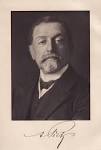
Arnold Pick |
Arnold Pick (medicine) Arnold Pick first uses the term dementia praecox in this form. |
|
30 Nov 1890
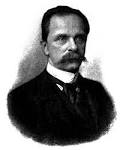
Themistocles Gluck |
Themistocles Gluck (medicine) The earliest recorded attempt at hip replacement is carried out by Themistocles Gluck in Berlin, using ivory to replace the femoral head. |
|
30 Nov 1890
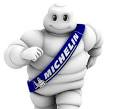
Michelin |
Michelin (technology) Michelin patent the removable pneumatic bicycle tire. |
|
30 Nov 1890

Panhard et Levassor |
Panhard et Levassor (technology) Panhard et Levassor produce the first Système Panhard automobile layout, consisting of four wheels with front-engine, rear-wheel drive and a sliding-gear transmission, designed by Émile Levassor. |
|
30 Nov 1890

William Le Baron Jenney |
William Le Baron Jenney (technology) William Le Baron Jenney develops the construction of steel frame skyscrapers in Chicago with the Ludington, Manhattan and Second Leiter Buildings. |
|
30 Nov 1890
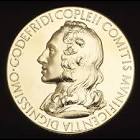
Copley Medal |
Copley Medal (awards) Copley Medal: Stanislao Cannizzaro |
|
30 Nov 1890
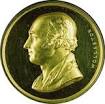
Wollaston Medal |
Wollaston Medal (awards) Wollaston Medal for Geology: John Wesley Judd |
|
10 Feb 1891
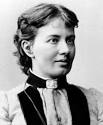
Sofia Kovalevskaya |
death Sofia Kovalevskaya Sofia Kovalevskaya (born 1850), mathematician. |
|
27 Feb 1891

David Sarnoff |
birth David Sarnoff Born 27 Feb 1891; died 12 Dec 1971 at age 80. American inventor who was a pioneer in the development of both radio and television broadcasting. He was the first general manager of RCA and founded the television network NBC (1926). His first job was that of delivery boy, and his life continued to display a rags-to-riches element. He became a wireless operator and met Marconi in 1906. Foreseeing the multiple possibilities of radio, he became commercial manager of American Marconi in 1917, having already predicted that radio would become “a household utility in the same sense as the piano or phonograph”. RCA succeded the Marconi group (1919), and Sarnoff became its general manager (1921) then its president (1930-50). He steering it into the world of television, first black and white, then colour with NBC. |
|
10 Mar 1891

Almon B. Strowger |
Almon B. Strowger (technology) Almon B. Strowger, an undertaker in Topeka, Kansas, is granted a patent in the United States for an automatic telephone exchange using the Strowger switch. |
|
15 Mar 1891

Jesse W. Reno |
Jesse W. Reno (technology) Jesse W. Reno patents the first escalator at Coney Beach in the United States. |
|
30 Mar 1891

Arthur William Sidney Herrington |
birth Arthur William Sidney Herrington Born 30 Mar 1891; died 6 Sep 1970 at age 79. American engineer and manufacturer who developed a series of military vehicles, the best known of which was the World War II jeep. During World War I, he started to work on a new design for military trucks for rough terrain, the smallest of which was the quarter-ton jeep with four-wheel drive that became the prototype for various models built in the 1930s and 1940s. The Jeep served in WW II as a litterbearer, machine gun firing mount, reconnaissance vehicle, pickup truck, front line limousine, ammo bearer, wire-layer and taxi. |
|
30 Apr 1891

Abram Lyle |
death Abram Lyle Died 30 Apr 1891 at age 70 (born 14 Dec 1820). Scottish shipowner and sugar refiner, known for Lyle's Golden Syrup. Lyle began in his father's cooperage business, but later extended into shipping with John Kerr. Their fleet grew from 161 tons in 1849 to 22,000 tons in 1870. As a cooper, Lyle supplied casks to ship Caribbean sugar and molasses. This led them to join with other partners to operate the Glebe Sugar Refinery (1865). Lyle moved the shipping operation in 1881 to wharves in East London where he built a refinery specialising in the production of golden syrup. When the price of raw sugar collapsed in 1882, Lyle suffered huge losses forcing reduction of his business holdings, yet his golden syrup product eventually thrived. Sugar refiner Henry Tate amalgamated with Lyle in 1921. |
|
30 Apr 1891
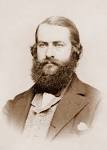
Joseph Leidy |
death Joseph Leidy Died 30 Apr 1891 at age 67 (born 9 Sep 1823). American zoologist who made significant contributions in a remarkably wide range of earth and natural science disciplines, including comparative anatomy, parasitology, and paleontology. As the Father of American Vertibrate Paleontology, he described not only the first relatively complete dinosaur skeleton, but the diversity of fossil finds in the American West. His knowledge of comparative anatomy enabled him to make sense of even fragmentary fossil remains. He was also a competant microscopist, scientific illustrator, and published papers in human biology and medicine. His microscopic examination of parasite cysts in cooked ham and microorganisms in housefly mouthparts enabled him to improve public heath. |
|
10 May 1891
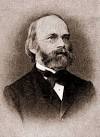
Karl Wilhelm von Nägeli |
death Karl Wilhelm von Nägeli Died 10 May 1891 at age 74 (born 27 Mar 1817). Swiss botanist famous for his work on plant cells. At the age of 25 he wrote a paper on pollen formation of seed and flowering plants and described cell division with great accuracy. He noted what he called transitory cytoblasts, which later were identified as chromosomes. |
|
11 May 1891

Alexandre-Edmond Becquerel |
death Alexandre-Edmond Becquerel Alexandre-Edmond Becquerel (born 1820), physicist. |
|
20 May 1891

Kinetograph |
Kinetograph (technology) First public demonstration of the Kinetograph moving picture system developed by W. K. L. Dickson under the direction of Thomas Alva Edison, a showing of the film known as Dickson Greeting. Edison files patents on the camera and peephole viewer on August 24. |
|
09 Jun 1891

Henry Edwards |
death Henry Edwards Henry Edwards (born 1827), entomologist and actor. |
|
22 Jun 1891

Franz Alexander |
birth Franz Alexander Born 22 Jun 1891; died 8 Mar 1964 at age 72. Franz Gabriel Alexander was a Hungarian-American physician and psychoanalyst sometimes called the “father of psychosomatic medicine” because he was a leader in identifying emotional tension as a significant cause of physical illness. |
|
05 Jul 1891

John Howard Northrop |
birth John Howard Northrop John Howard Northrop (suicide 1987), American biochemist, winner of the Nobel Prize in Chemistry (1946) |
|
07 Jul 1891

Travelers cheque |
Travelers cheque In 1891, a patent was granted for the travelers cheque |
|
13 Jul 1891
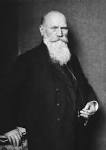
Neuron name coined |
Neuron name coined In 1891, the name neuron, with the meaning "nerve cell", was coined for the first time in print, by W. Waldeyer in his paper published in this day's issue of the German journal, Berliner Klin. Wochenschr. The word ‘neuron’ had been introduced earlier in scientific papers, but used in difference senses, now obsolete, by B.T. Lowne (1883) for the neural part of the compound eye of athropods, and by B.G. Wilder (1884) for the neuraxis. |
|
15 Aug 1891

Tor Bergeron |
birth Tor Bergeron Born 15 Aug 1891; died 13 Jun 1977 at age 85. Tor Harold Percival Bergeron was a Swedish meteorologist best known for his work on cloud physics. He was the first meteorologist to take into account the upper atmospheric phenomena and their effect on climate. He demonstrated that raindrops can form in the upper parts of clouds, which contain little liquid water, through the growth of ice crystals. This happens at temperatures between -10°C and -30°C (14°F and -22°F) and is known as the Bergeron process. Work done in the 1930s by Tor Bergeron and W. Findeisen led to the concept that clouds may contain both supercooled water and ice crystals. This led further to the concepts of “warm rain” and “cold rain.” |
|
14 Sep 1891

Ivan Matveyevich Vinogradov |
birth Ivan Matveyevich Vinogradov Ivan Matveyevich Vinogradov (died 1983), Russian mathematician. |
|
24 Sep 1891
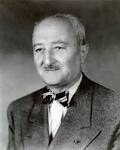
W. F. Friedman |
birth W. F. Friedman W. F. Friedman (died 1969), Bessarabian-born cryptanalyst. |
|
30 Sep 1891
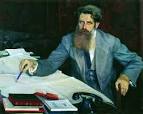
Otto Yulyevich Shmidt |
birth Otto Yulyevich Shmidt Born 30 Sep 1891; died 7 Sep 1956 at age 64. Soviet scientist and explorer responsible for the Soviet program of exploration and exploitation of Arctic resources; through his many activities he exercised a wide and diverse influence on Soviet life and thought. In 1937, on drifting ice near the North Pole, he established a scientific station notable for its oceanographic researches (1937). In the late 1940's he advanced a theory of the formation of the Earth from a rotating cloud of dust and gas. Schmidt led an expedition on the maiden voyage (1933) of the steamship Chelyuskin, which became ice-bound and went under in the Bering Strait. All the 111 scientists and crew members made it just in time to disembark the doomed vessel and, within a month, they were all ferried safely to the mainland. |
|
01 Oct 1891

Eugène Dubois |
Eugène Dubois (paleontology) Eugène Dubois finds the first fragmentary bones of Pithecanthropus erectus (later redesignated Homo erectus), or 'Java Man', at Trinil on the Solo River. |
|
14 Oct 1891
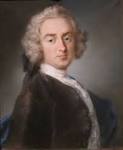
Sir James Gray |
birth Sir James Gray Born 14 Oct 1891; died 14 Dec 1975 at age 84. English zoologist who played a leading part in changing the main objective of 20th-century zoological research from evolutionary comparative anatomy to the functional analysis of living cells and living animals, particularly through his editorship (1925-54) of the Journal of Experimental Biology. He authored How Animals Move (1953), and Animal Locomotion (1968). Gray applied mechanical principles to the analysis of animal movement. In 1936, his calculations started a controversy, called Gray's paradox, concerning comparisons of swimming efficiency in fish and in submarines. Energetics calculations suggest that fish and other ocean denizens are much more efficient swimmers than subs, while theoretical hydrodynamic calculations suggest they are not. |
|
24 Oct 1891

Ernest Melville DuPorte |
birth Ernest Melville DuPorte Ernest Melville DuPorte (died 1981), Caribbean-born Canadian insect morphologist. |
|
29 Oct 1891

Edward H. Hargraves |
death Edward H. Hargraves Died 29 Oct 1891 at age 75 (born 7 Oct 1816). Edward Hammond Hargraves was an English prospector whose discovery of gold started the Australian Gold Rush, which attracted many new migrants from around the world in search of gold. Previously, when he heard of the California Gold Rush (started 24 Jan 1848) Hargraves travelled there. He learned the necessary skills, but had no success. So he next tried in Australia. On 12 Feb 1851, aged 34, he rode on horseback along Lewis Ponds Creek, north of Guyong, New South Wales with a guide, John Lister, age 18. They stopped at a water hole. There, Hargraves was excited by the similarity of terrain to his days prospecting in California. Panning the dirt in a schistose dyke, he soon found a few specks of gold, and more in further explorations of the region. |
|
14 Nov 1891
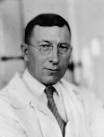
Frederick Banting |
birth Frederick Banting Frederick Banting (died 1941), Canadian discoverer of insulin, winner of the Nobel Prize in Physiology or Medicine (1923) |
|
18 Nov 1891

Joseph Wolstenholme |
death Joseph Wolstenholme Joseph Wolstenholme (born 1829), mathematician. |
|
29 Dec 1891

Leopold Kronecker |
death Leopold Kronecker Died 29 Dec 1891 at age 68 (born 7 Dec 1823). German mathematician who worked who worked to unify arithmetic, algebra and analysis, with a particular interest in elliptic functions, algebraic equations, theory of numbers, theory of determinants and theory of simple and multiple integrals. However the topics he studied were restricted by the fact that he believed in the reduction of all mathematics to arguments involving only the integers and a finite number of steps. He believed that mathematics should deal only with finite numbers and with a finite number of operations. He was the first to doubt the significance of non-constructive existence proofs, and believed that transcendental numbers did not exist. The Kronecker delta function is named in his honour. |